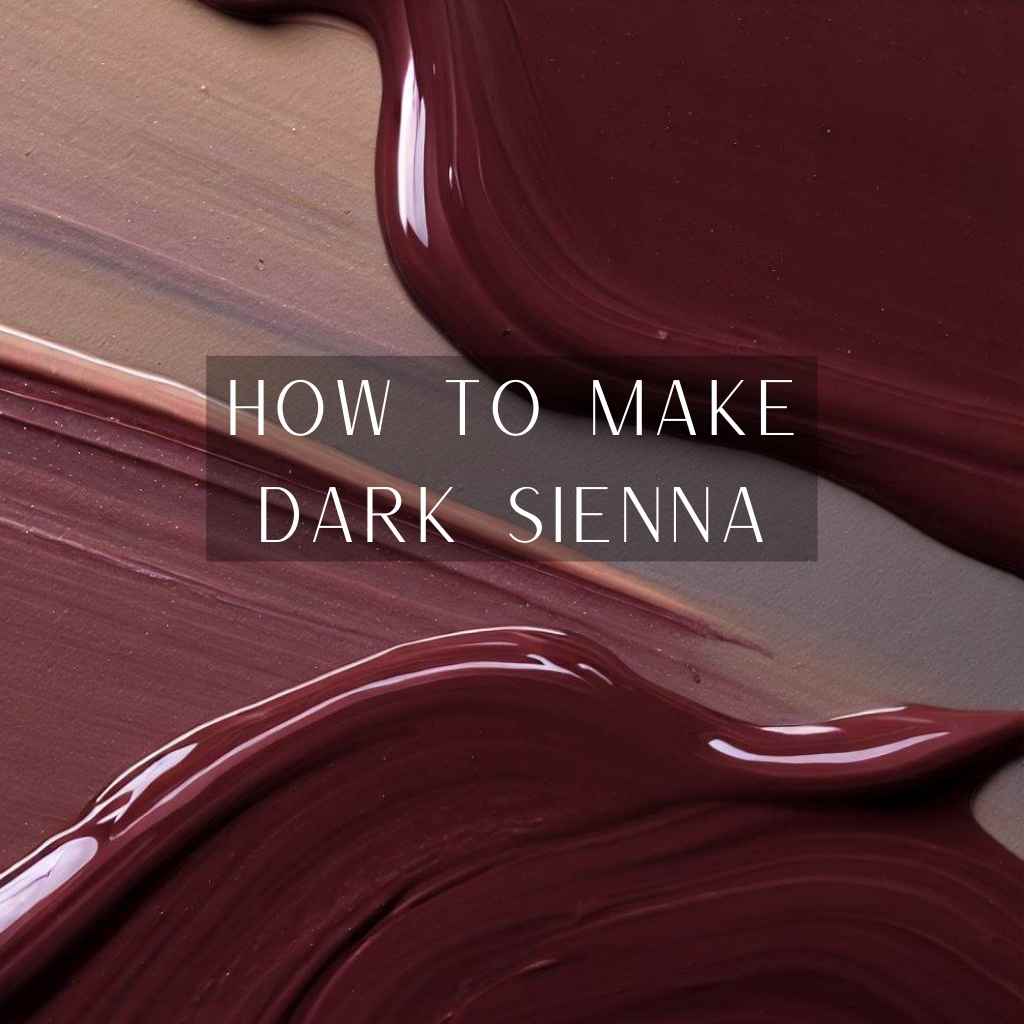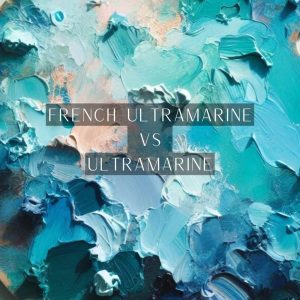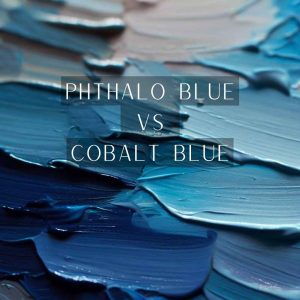Have you ever found yourself captivated by the warm, mysterious depths of dark sienna in art? The allure is undeniable, yet the mastery behind how to make dark sienna remains an enigma to many.
Fear not, for within this article, we delve into the heart of this captivating pigment, unearthing its origins, demystifying its composition, and unveiling the techniques that empower you to wield its magic.
Dark sienna can be created by blending raw sienna, burnt umber, and black pigments and gradually adding burnt umber and black to raw sienna for depth and richness.
Let’s dive into the world of dark sienna, where every stroke holds the potential to illuminate your masterpiece.
What is Dark Sienna?
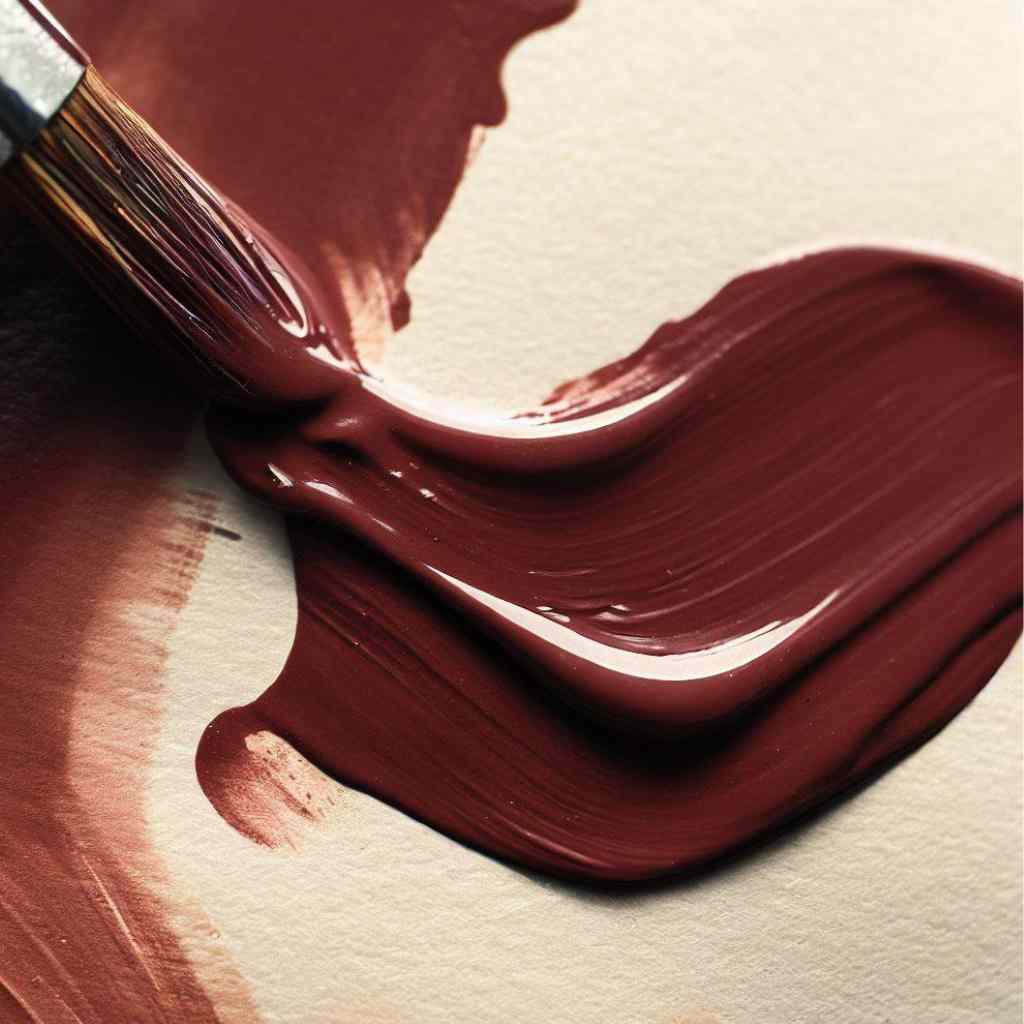
Dark Sienna, a member of the sienna pigment family, boasts a timeless allure that captures both the imagination and the eye. It stands as a testament to the intricate interplay between pigments and light, yielding a color that resonates with warmth and depth.
This hue holds a unique ability to transform a canvas, infusing it with a sense of mystery and elegance. From landscapes to portraits, dark sienna commands attention, enveloping the viewer in its embrace.
To truly appreciate dark sienna, it’s essential to explore its historical roots. Derived from natural earth pigments, it finds its origins in the vibrant city of Siena, Italy, which has been a hub of artistic inspiration for centuries.
The artists of the Renaissance recognized the magic within these pigments and their ability to evoke the hues of the natural world. As a result, sienna pigments—including dark sienna—found their way onto palettes and canvases, forever shaping the artistic landscape.
Materials You’ll Need
Gathering your artistic tools is akin to preparing a painter’s palette for a symphony of colors. To create dark sienna, ensure you have the following essentials at your fingertips:
- Raw sienna
- Burnt umber
- Black pigments
- Mixing Palette or Surface
- Palette Knife or Mixing Brushes
- Containers for Mixing and Storing
How to Make Dark Sienna: Step-by-Step Guide
The art of mixing colors is a delicate dance—one that requires precision, patience, and a touch of intuition.
Here is a step-by-step guide to being your trusted companion, guiding you through the alchemical process of transforming pigments into a hue that resonates with depth and elegance-
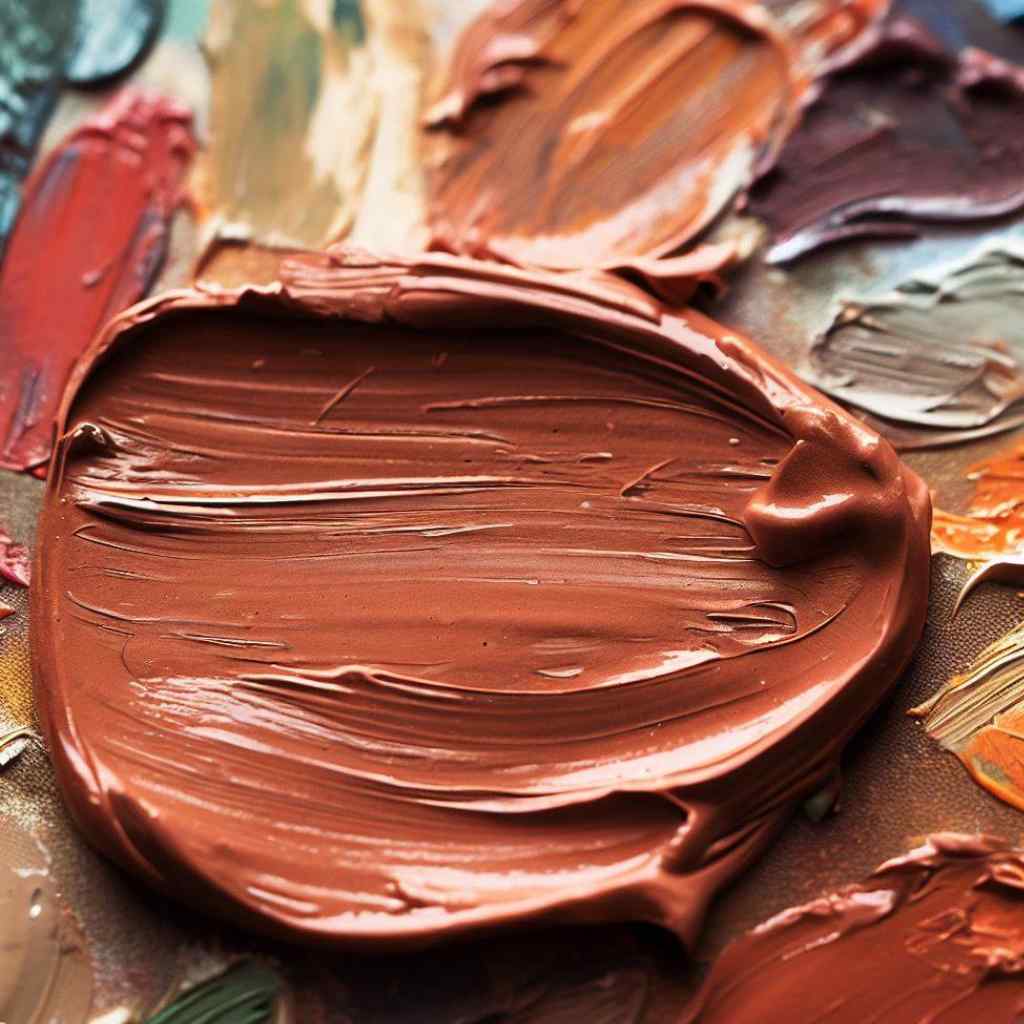
- Start with Raw Sienna: Begin with raw sienna, the base of your creation. This pigment, reminiscent of warm sun-kissed earth, sets the tone for what’s to come.
- Incorporating Burnt Umber: Introduce burnt umber into the mix, bit by bit. This step-by-step addition grants you the power to control the depth of your shade, gradually transforming it into an enchanting dark sienna.
- Introducing Black Pigment: As your mixture deepens, invite black pigment to join the party. This addition injects a touch of mystery and elegance, moving your shade closer to its coveted dark sienna essence.
- Achieving Consistency: Stir, blend and knead your mixture until it achieves a harmonious consistency. The colors should meld seamlessly, promising a uniform application.
- Testing the Color: Before unveiling your newly mixed dark sienna to your canvas, test it on a surface. This step ensures that the shade matches your creative vision.
Adjusting the Shade
Nuance is vital—a slight adjustment can transform a piece from ordinary to extraordinary.
Dark sienna isn’t a one-size-fits-all hue; it’s a canvas of possibilities waiting to be explored. Imagine a painter’s palette, filled not only with pigments but also with potential shades.
Whether you’re aiming for a warmer undertone or a cooler, deeper feel, dark sienna accommodates your artistic aspirations-
- Adding Warmth with Raw Sienna: Imagine the cozy embrace of a hearth’s warmth—the addition of raw sienna to your mixture can evoke a similar sensation.
By introducing more raw sienna, you infuse your dark sienna with a sun-kissed undertone. This modification adds a touch of familiarity and approachability, making your artwork feel inviting.
- Adjusting Ratios of Burnt Umber and Black: Consider your palette a scientist’s laboratory, where ratios of pigments hold the secret to your desired shade. Adjusting the proportions of burnt umber and black allows you to dictate the intensity of your dark sienna.
More burnt umber imparts richness, while more black adds an air of enigma. Play with these ratios as an artist might experiment with brushstrokes, discovering the harmony that resonates.
- Experimenting with Unique Variations: Artistry is the realm of the bold and the curious. As you navigate the territory of dark sienna, dare to experiment.
Infuse unexpected pigments into the mix—perhaps a touch of crimson or a hint of ultramarine. These creative deviations can result in unique variations that redefine the boundaries of your creative vision.
FAQs
- Can You Create Dark Sienna from Pre-Mixed Paints?
While pre-mixed paints offer convenience, the magic of crafting dark sienna lies in the artist’s ability to personalize the shade. Mixing raw sienna, burnt umber, and black pigments allows you to control the depth, warmth, and character of your dark sienna, making each mixture a unique expression of your creativity.
- How Does Dark Sienna Compare to Other Dark Brown Pigments?
Dark sienna possesses a unique charm that distinguishes it from other dark brown pigments. Its warm undertones, derived from its raw sienna base, create a sense of depth and complexity that resonates with both warmth and sophistication. While other pigments may convey darkness, dark sienna’s distinctiveness lies in its ability to evoke earthy elegance.
- Can You Use Dark Sienna in Acrylic, Oil, and Watercolor Mediums?
Absolutely. Dark sienna transcends the boundaries of artistic mediums, making itself at home in acrylic, oil, and watercolor realms. Whether you’re a painter wielding brushes on canvas or experimenting with watercolor washes, dark sienna adapts to your chosen medium, allowing you to infuse depth and character into your artwork.
- Is Dark Sienna Suitable for Both Realism and Abstraction?
Absolutely. Dark Sienna’s chameleon-like nature allows it to seamlessly transition between realism and abstraction. In realism, it can capture the nuances of skin tones and natural landscapes with depth and authenticity. In abstraction, it can be a canvas for experimentation, contributing to bold and dynamic compositions.
- Can Dark Sienna Convey Specific Emotions?
Indeed, dark sienna is a palette of emotions waiting to be explored. Its warm, earthy tones can evoke feelings of comfort and nostalgia, making it an excellent choice for conveying warmth and familiarity. Additionally, its deep and enigmatic qualities can add an air of mystery, making it ideal for expressing contemplation and depth.
- Can I Blend Dark Sienna with Metallics or Iridescent Pigments?
Absolutely—blending dark sienna with metallic or iridescent pigments is an invitation to explore a world of contrast and visual intrigue. The marriage of earthy warmth with the shimmer of metallics creates a juxtaposition that’s both captivating and unexpected, adding a touch of opulence to your compositions.
- How Does Dark Sienna Interact with Light?
Dark sienna’s interaction with light is akin to a dance—a play of highlights and shadows that create a multidimensional effect. Depending on its application and the angle of light, dark sienna can exhibit an intriguing interplay of warm and cool tones, adding depth and movement to your artwork.
- Can Dark Sienna Be Mixed with White to Create Tints?
Indeed, dark sienna can be blended with white to create tints that range from subtle to radiant. By gradually adding white, you infuse your dark sienna with a sense of luminosity and softness, offering yet another dimension to your artistic palette.
Wrapping Up
As our exploration of how to make dark sienna comes to a close, we find ourselves at the threshold of unlimited possibilities.
The brushstrokes, the blending, the journey of hues—each moment contributes to the symphony that is your creation. With dark sienna as your guide, you possess the key to unlock a world of depth, emotion, and allure. It’s not just a pigment; it’s a conduit to translate your imagination onto the canvas.
As your artistic voyage continues, remember that the journey is ongoing. The strokes may dry, but the inspiration, the mastery, and the legacy you’re building—those are eternal. May your palette forever be enriched by the sublime art of dark sienna.

